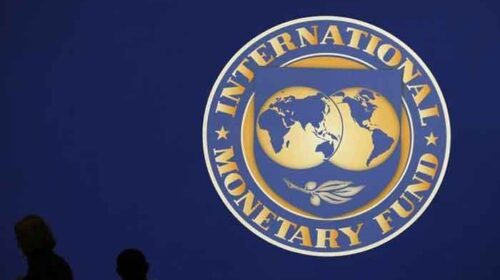The IMF sixth review staff report published recently contains some ambitious targets for the public finances of the federal and provincial governments combined for 2021-22. These are reflected in the performance criteria and indicative targets for the remaining three reviews in the existing programme.
The expectation is that the ongoing financial year will close with a small primary surplus, for the first time after many years. This will represent a fundamental improvement in the state of public finances of Pakistan and facilitate the process of reduction in the net government debt to GDP ratio.
The target for the consolidated federal and provincial budget deficit in 2021-22 is 6.1 percent of the GDP. This will ensure that the deficit is close to the interest cost of debt servicing by the federal government, thereby ensuring a close to zero primary deficit.
The ambitious target of elimination of the primary deficit is to be achieved first by exceptionally rapid growth in FBR tax revenues. These revenues are targeted to increase from Rs 4760 billion in 2020-21 to Rs 6100 billion, showing thereby a growth rate of 28 percent, which has never been achieved before.
The original FBR revenue target for the current year was Rs 5829 billion. This was raised to Rs 6100 billion in the sixth review, with the expectation that the Finance (Supplementary) Bill will be passed before the finalization of the review. This bill has since been passed including wide-ranging withdrawal of exceptions and enhancement in tax rates in the sales tax.
The bill was expected to yield over Rs 350 billion annually. However, major items like fertilizer, pesticides and tractors were excluded prior to presentation of the bill. This has reduced the potential additional revenue to Rs 220 billion.
FBR revenues performed exceptionally well in the first half of 2021-22. They showed a phenomenal growth rate of 32 percent. This was due, of course, to the over 60 percent increase in the rupee value of imports, due to the jump in international prices of commodities, especially oil.
The required growth rate in FBR revenues in the second half of 2021-22 is 25 percent to achieve the enhanced target of Rs 6100 billion. However, if, as highlighted in the previous article, IMF expects a big fall in commodity prices, then this growth rate will be difficult to achieve.
Already, the growth rate in revenues in the last two months has fallen to 15 percent and the monthly targets have been missed. Therefore, there could be some shortfall of up to Rs 100 billion in FBR revenues in 2021-22. Nevertheless, the annual growth rate could be high at over 25 percent.
The big problem in meeting the overall revenue target is the likely shortfall in revenues from the petroleum levy. The budget estimate of revenue from this source is Rs 610 billion for 2021-22. But only Rs 70 billion has been collected in the first six months.
The government has been constrained from increasing the rate of the levy due to the recent big jump in the oil prices to almost $94 per barrel. There is now the likelihood that the revenue from this source could be almost Rs 300 billion below the targeted level in 2021-22. Overall, the shortfall in federal revenues could approach Rs 400 billion.
Turning to the expenditure side of the federal budget, there was adequate provision for growth in current expenditure of 19 percent during the year. However, there is a change in composition. The IMF projections indicate that the outlay on subsidies and grants will be almost Rs 300 billion higher than originally budgeted.
This is largely due to the need for greater support to the power sector. Correspondingly, the expenditure on staff salaries, allowances and pensions and operating costs is now expected to be lower. This seems unlikely given the pay and pension increases during the year. Further, given the 2.75 percent hike in policy rate, the interest costs on debt servicing could be higher by almost Rs 150 billion.
The IMF projections indicate a massive cut in federal development spending from the initially budgeted level of Rs 964 billion to only Rs 464 billion. This has certainly removed any perception that the 2021-22 budget would be expansionary in nature.
The cut-back is so large that the ‘fiscal space’ for development spending at the federal level is only Rs 110 billion in the second half of 2021-22, as compared to the expenditure of Rs 584 billion in the corresponding period of last year. Clearly, the IMF expectation is that the implementation of projects will effectively come to a standstill from January to June 2022. This has truly made a mockery of the original budgetary target of a 50 percent jump in development spending.
Overall, the more likely outcome is for the federal budget deficit in 2021-22 to be significantly higher than the level anticipated in the IMF Sixth Staff Review Report, as shown below:
=======================================================================
Deviation from IMF Projections
(Rs in Billion)
=======================================================================
Shortfall in FBR Revenues -100
Shortfall in Revenue from Petroleum Levy -300
Higher Federal current expenditure 200
=======================================================================
Likely Increase in Federal Budget Deficit 600
=======================================================================
Therefore, as opposed to the IMF Program target federal deficit of close to Rs 3.8 trillion, it could approach Rs 4.4 trillion. The anticipated Provincial cash surplus is Rs 405 billion. Already, in the first six months, a combined surplus of Rs 481 billion has been generated. Therefore, the provincial cash surplus target is likely to be realized.
Overall, the consolidated budget deficit in 2021-22 could be 7.2 percent of the GDP as compared to the target level of 6.1 percent of the GDP and close to last year’s deficit. The primary deficit could exceed 1 percent of the GDP. As such, the likelihood of the performance criteria on the size of the primary deficit being met is low in the forthcoming program reviews.





